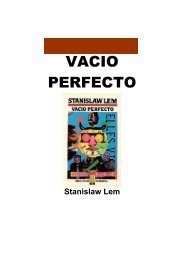cambridge-crime-fiction
cambridge-crime-fiction
cambridge-crime-fiction
You also want an ePaper? Increase the reach of your titles
YUMPU automatically turns print PDFs into web optimized ePapers that Google loves.
martin a. kayman<br />
lecture and demonstration in science which is, at the same time, the solution<br />
to the <strong>crime</strong>.<br />
Kennedy’s use of science and technology is both sensationalist and based<br />
in fact (it is also, like many others of the time, frequently racist). Many of the<br />
devices he relies on for his solutions may sound made-up, but instruments<br />
like the ‘sphymomanometer’, the ‘plethysmograph’, the ‘detectaphone’ and<br />
the ‘optophone’ were all contemporary medical or electrical technologies,<br />
as actual as other early twentieth-century inventions like blood typing, the<br />
silencer, the microphone and the oxyacetylene torch, all of which Kennedy<br />
uses – along, as we have seen, with Freudian dream analysis. Most discoveries<br />
and inventions are credited to their originators, although Reeve does<br />
sometimes push contemporary technology beyond its real capacities at the<br />
time (including a fancifully simple lie-detector, electrico-cardiac resuscitation,<br />
and X-ray movies). On the other hand, the milieu in which the <strong>crime</strong>s<br />
take place, featuring financiers and industrialists, society ladies undergoing<br />
scientific beauty treatments, inventors (of synthetic rubber, airplanes that can<br />
hover or remote-controlled torpedoes), and Latin American revolutionary<br />
gun-runners, connect this fascinating new technology to the contemporary<br />
industrial and political world.<br />
Why, then, was Sherlock Holmes so much more successful than other scientific<br />
detectives? There are certainly literary reasons. Conventional literary<br />
history, which views earlier detective <strong>fiction</strong> as a series of anticipations of<br />
Doyle, can be turned on its head to argue that the elements of the Sherlock<br />
Holmes character and stories are skilfully selected from tried and tested elements<br />
in earlier sensational novelists and story writers. But that is far from<br />
accounting for the verve of Doyle’s writing, the ingenuity of the stories and<br />
the skill and economy of their construction. The problem-setting and solving<br />
structure provides fundamental narrative satisfactions, but, as Stephen<br />
Knight has shown, at least in the two principal collections, The Adventures<br />
of Sherlock Holmes (1892) and Memoirs of Sherlock Holmes (1894), Doyle<br />
plays enough variation on the pattern to keep it constantly fresh. 23<br />
Doyle expertly achieved the right balance of elements to provide the male<br />
middle-classes with relaxing reading which flattered them by providing an intellectual<br />
adventure, while assuaging their anxieties about the modern world.<br />
The stories celebrate the materialism of the age, showing that the ordinary<br />
small objects of everyday existence, if observed properly, have stories, create<br />
atmospheres, point directions. 24 At the same time, they celebrate the capacity<br />
of rationalism to organise the material of existence meaningfully, and<br />
the power of the rational individual to protect us from semiotic and moral<br />
chaos. Yet the <strong>crime</strong>s are rarely excessively troubling (and, although we do<br />
find murders, on the other hand in many stories there is no <strong>crime</strong> at all).<br />
48



